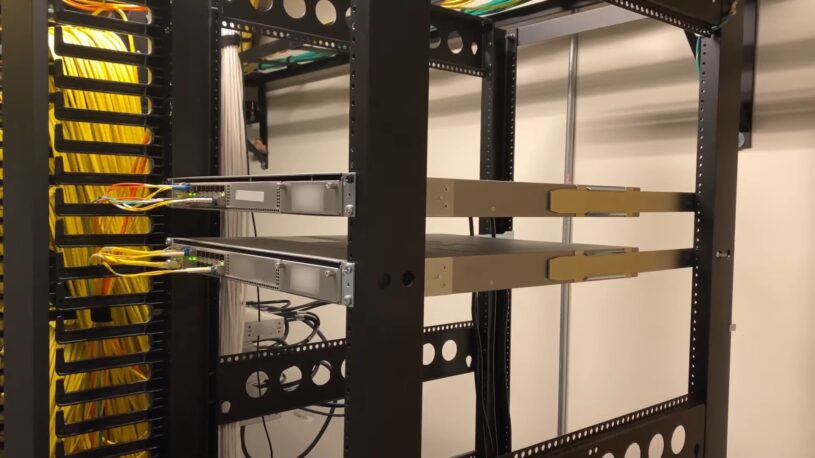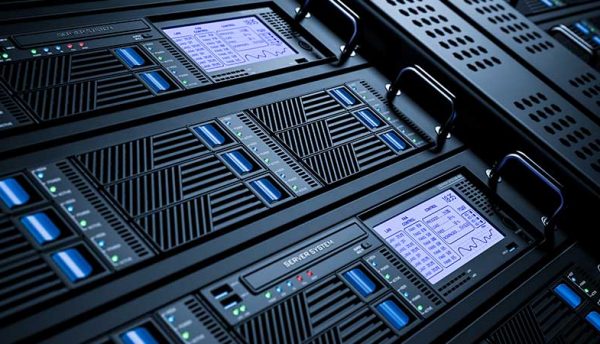Arranging a data center or just a small server room is a complicated task, although it may seem quite easy. Technicians should keep in mind ergonomics, hardware protection, and convenience for maintenance. Specialized furniture constructions help cope with all these requirements.
Server racks come as essential components of IT infrastructure. Their primary purpose is to come as highly functional bodies for server equipment accommodation. Manufacturers distinguish between two main classes of enclosures in the industry. Racks fall into 2-upright and 4-post models. Below, we’re going to find out the difference between them and highlight the key features of each model. In the end, we’re to make a comparative table of 2-post vs 4-post rack models.
2-Post Models

A 2-post rack is a small, compact construction that has only 2 vertical uprights, to which hardware is fasteners. Its body is mainly made of extruded aluminum. Uprights are equipped with tech holes that serve for attaching devices. A standard body of such models includes vertical supports and a footplate for its reliable fixing on the floor. The main benefits of such constructions include:
- A compact size ensures perfect ergonomics since racks occupy little space. Due to this feature, such constructions are ideal for small premises.
- Easier cabling and wiring. Cords do not tangle and are arranged neatly.
- Easy maintenance since the staff can approach devices from all sides.
- Quick and easy assembly. One or several technicians can cope with assembly in half an hour using a manual. Moreover, it is easy to relocate it in an unassembled form.
- A lightweight body, which simplifies transportation.
- A lower price. Since less material is used, the cost of such construction is lower.
Yet, its size also sets certain limitations. For instance, models are not suitable for large IT systems and the variety of carrying devices is limited.
As for the sphere of application, its compact size makes it ideal for installation in small premises. When opposing 2-post rack vs 4-post rack models, the first one is perfect for the accommodation of network systems that consists of several devices and does not require a lot of space.
4-Post Racks

A 4-support rack is a more spacious body with a rectangular base and 4 vertical posts. Its body can be equipped with a “roof” and removable sidewalls. The body is usually made of either steel or aluminum or a combination of both materials. Equipment is supported on shelves and mounting rails. Its construction characteristics feature the next advantages:
- High load capacity. Due to a bigger size, such models can house more devices.
- More fastening opportunities. When rails or shelves are attached, it becomes possible to place equipment on them.
- A large variety of sizes. Models come in different heights and widths.
- Adjustable dimensions. The depth is customizable due to the movable rear side of the cabinet.
Due to their size and construction features, such models are designed for installation in spacious premises, separated data centers, etc.
2-Post VS 4-Post Server Rack: Comparison

First, note that both types of racks are advantageous in terms of airflow, unhindered access, and cable management, if compared to enclosed cabinets. Both 2-upright and 4-support models feature the next pros:
- Perfect air circulation due to the absence of side panels, resulting in unhindered airflow and hot and cold air exchange. Thus, better cooling is achieved.
- An open construction provides unhindered and easy access to all components of IT systems so that administrators can easily get to every device and maintain units effectively.
- The maintenance staff can also design cable routes conveniently since technicians are not tied to specific holes in enclosures.
Yet, let’s compare 4-post rack vs 2-post rack and highlight the main differences between them:
| Parameter | 2-upright | 4-post |
| Size | Small; perfect for limited spaces | Larger; ideal for environments with ample space |
| Load capacity | Low; can carry lightweight hardware | High; designed for supporting heavy equipment |
| Mounting style | Devices are attached directly to vertical uprights | Mounting rails and shelves are used to support hardware |
| Accessories | Organizers for cable management | Side panels and doors for improved security
Shelves and rails for equipment installation |
| Material | Extruded aluminum | Aluminum or steel, or both |
| Assembly | Quicker and easier | Takes more time and effort |
| Cost | Cheaper | More expensive |
To sum up the article, let us mention some key requirements when electing an appropriate rack model. When choosing between a 2-post vs 4-post server rack, consider the future expansion. In most cases, businesses rise and require more computing power to process data and perform tasks. Thus, it is more likely that you’ll encounter the need to add new components to your existing IT system. Thus, choose a more spacious model.
Also, make sure to measure the required size correctly. Remember that hardware is placed loosely to ensure air circulation. Make a 3D visualization project to design the best layout and calculate the size correctly. Remember that the height is measured in U (where 1U is 1,75 inches). Check the carrying capacity; make sure that the selected model will be capable of carrying your hardware.
Consider for what premises you need the rack. Depending on the type of room and its size, different models are suitable.
Pay attention to the production technology to ensure a smooth and long-term service without deterioration and unexpected damage. Remember that the choice of a proper model is a responsible and effort-consuming task. Do not hurry and consider the issue from all aspects.
